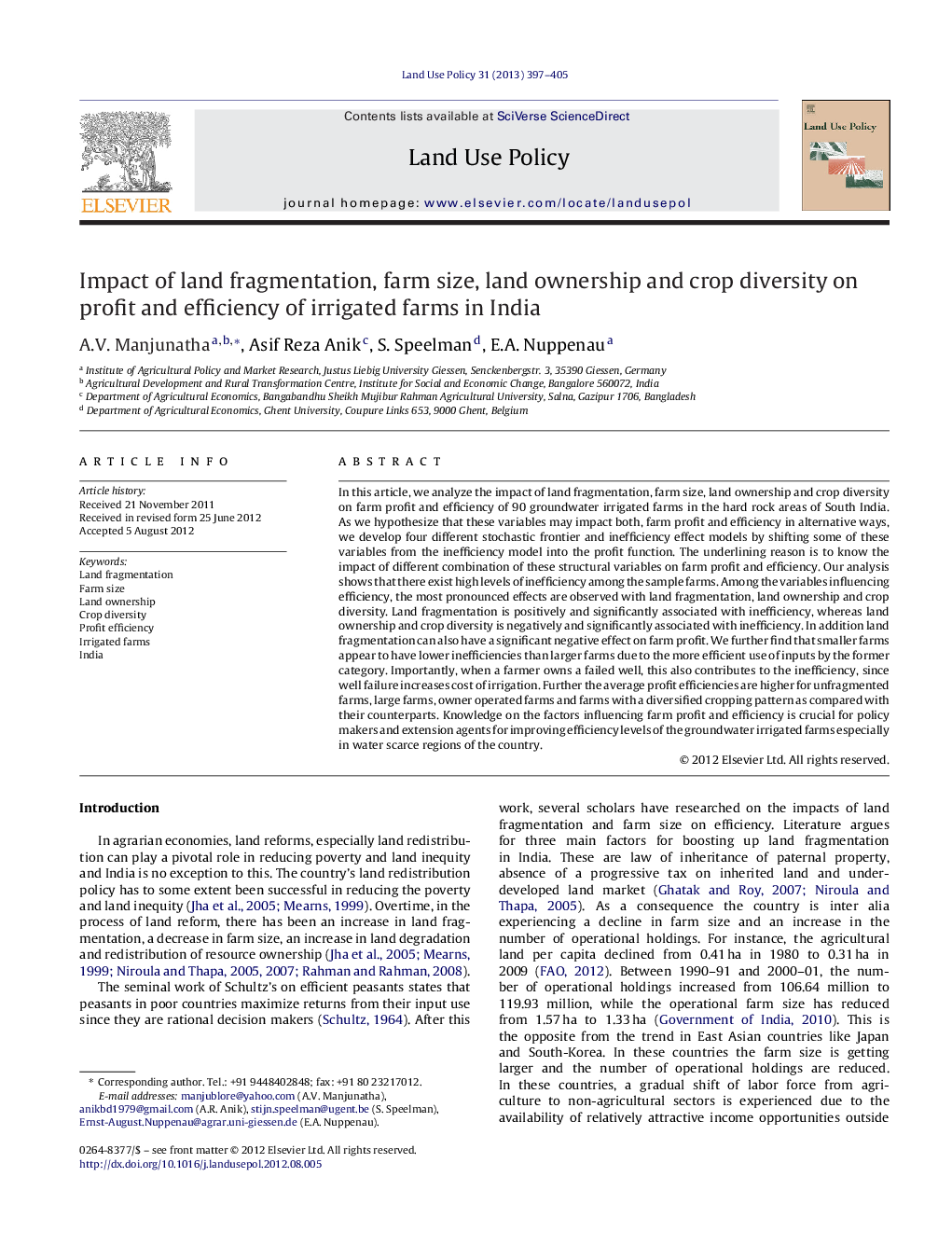| کد مقاله | کد نشریه | سال انتشار | مقاله انگلیسی | نسخه تمام متن |
|---|---|---|---|---|
| 93096 | 160112 | 2013 | 9 صفحه PDF | دانلود رایگان |
In this article, we analyze the impact of land fragmentation, farm size, land ownership and crop diversity on farm profit and efficiency of 90 groundwater irrigated farms in the hard rock areas of South India. As we hypothesize that these variables may impact both, farm profit and efficiency in alternative ways, we develop four different stochastic frontier and inefficiency effect models by shifting some of these variables from the inefficiency model into the profit function. The underlining reason is to know the impact of different combination of these structural variables on farm profit and efficiency. Our analysis shows that there exist high levels of inefficiency among the sample farms. Among the variables influencing efficiency, the most pronounced effects are observed with land fragmentation, land ownership and crop diversity. Land fragmentation is positively and significantly associated with inefficiency, whereas land ownership and crop diversity is negatively and significantly associated with inefficiency. In addition land fragmentation can also have a significant negative effect on farm profit. We further find that smaller farms appear to have lower inefficiencies than larger farms due to the more efficient use of inputs by the former category. Importantly, when a farmer owns a failed well, this also contributes to the inefficiency, since well failure increases cost of irrigation. Further the average profit efficiencies are higher for unfragmented farms, large farms, owner operated farms and farms with a diversified cropping pattern as compared with their counterparts. Knowledge on the factors influencing farm profit and efficiency is crucial for policy makers and extension agents for improving efficiency levels of the groundwater irrigated farms especially in water scarce regions of the country.
► Land fragmentation is positively and significantly associated with inefficiency, whereas land ownership and crop diversity is negatively and significantly associated with inefficiency.
► Small farms appear to have lower inefficiencies than large farms.
► Further the average profit efficiencies are higher for unfragmented farms, large farms, owner operated farms and farms with a diversified cropping pattern as compared with their counterparts.
► Such information is crucial for the policy makers for improving the profits and efficiency of irrigated farms in India.
Journal: Land Use Policy - Volume 31, March 2013, Pages 397–405
